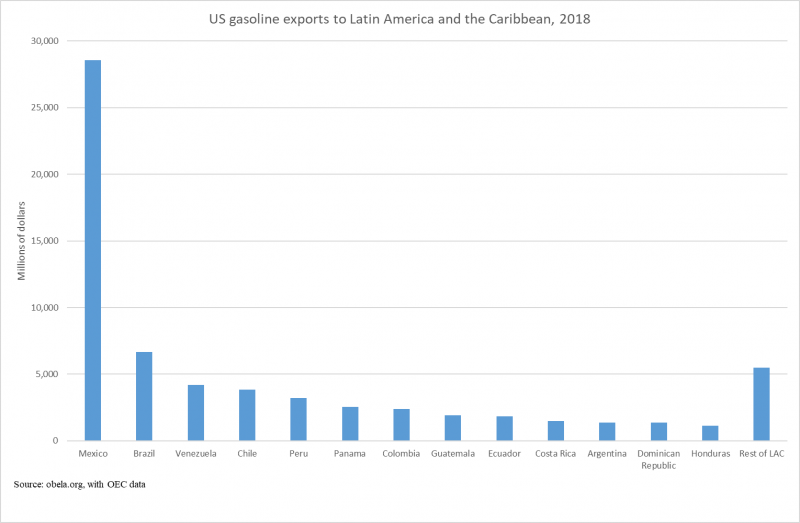The RCEP: the new trade Asian block Facing Latin America and the Caribbean
- blog de cdeleon
- 2165 lecturas
With the recent signature of the Regional Comprehensive Economic Partnership (RCEP), Latin America and the Caribbean (LAC) has the opportunity to access the world's largest economic bloc, which accounts for 30% of the world's GDP. LAC countries have made individual efforts to access the Asian market through bilateral agreements. Alliances such as the Trans-Pacific Partnership (TTP-11) and the Pacific Alliance (PA) have failed to establish treaties at the inter-regional level. The RCEP is an opportunity and alternative for LAC blocs to coordinate and use this new market as a catapult for recovery from the COVID-19 crisis.

The conclusion of the RCEP in November 2020 shows the partnership's clear intention to expand its intra- and inter-regional trade relations. In a scenario where commerce and investment from Southeast Asia are steadily increasing, the most important is China's relationship, an increasingly important trading partner for South America. Due to increased imports of raw materials and foreign direct investment in renewable energy and infrastructure in the sub-region. On the other hand, China is Mexico's second-largest supplier.
Although no business agreement exists to date between the Association of Southeast Asian Nations (ASEAN) or the RCEP and any Latin American trade block, multiple bilateral trade and investment agreements have been established over the past two decades, as shown in the graph below.
The interchange between the two regions has increased considerably in the last two decades. According to IDB statistics, in 2000, Asia accounted for one out of every ten dollars of LAC transaction flows; in 2018, that figure reached one out of every four. Similarly, LAC sales to ASEAN countries increased at an average annual rate of 11.8% for the same period, while for China, it was 20.4%. It is a clear sign that business relations between the two regions strengthened considerably.

Despite the almost non-existent exchange relationship between Mexico and China, the PA is one of the agreements between LAC and Asia that has resonated the most in the global economy, with Mexico, Colombia, Peru, and Chile. In October 2020, the PA and ASEAN met virtually to develop a new ASEAN-Pacific Alliance Work Plan (2021-2023), which seeks to cooperate on several issues.
The TTP-11 is the most ambitious economic integration project in the Pacific Rim. The predecessor agreement, the Trans-Pacific Partnership (TPP), was intended to be the US's gateway to the Asian market and serve as a barrier to China's entry into the Americas. With the US withdrawal during the Trump administration, China took advantage of the free field to organise and sign the RCEP.
There are various integration and cooperation projects in the region, such as MERCOSUR, CARICOM, CACM, CAN, and SICA. It is worth noting that over two centuries of LAC's history, there have been repeated efforts at economic integration and multilateral cooperation that have failed to materialise into a project. Truncated integration happens by combining internal factors such as the conflict between the primary-export and industrial sectors and the principle of due obedience that obliges Pan-Americanism. As a result, the region's economic development oscillated for much of the 20th century between industrial-led domestic and subregional development and the primary export sector's growth. The US has bilateral trade agreements with all LAC countries, except MERCOSUR, geared towards developing US product sales rather than developing a complex Latin American production apparatus. The most obvious demonstration of this is the division between the countries of the Caribbean Basin, SICA and T-MEC, and those of South America, where the former send cheap labour in the form of the maquila industry and illegal immigrants and the latter sells grains and minerals. On the contrary, the US ships refined gasoline to all hemisphere countries; its main product sold abroad.

Ecuador is the most recent example of US financial interference in countries' domestic politics, referred to as financial statecraft. The US International Development Finance Corporation pledged to disburse $3.5 billion to the Lenín Moreno government, politically aligned with the US government, to pay off part of its debt to China. The conditions exclude Huawei and other Chinese companies from constructing the 5G network and begin privatizing state assets financed by China to US companies.
The articulation of Latin American and Caribbean markets with the Asian countries of the RCEP is a way to strengthen relations in the global South to face the new world that emerges after the definitive change of the global economic axis from the Atlantic to the Pacific Ocean in 2020.